Embed presentation
Download to read offline

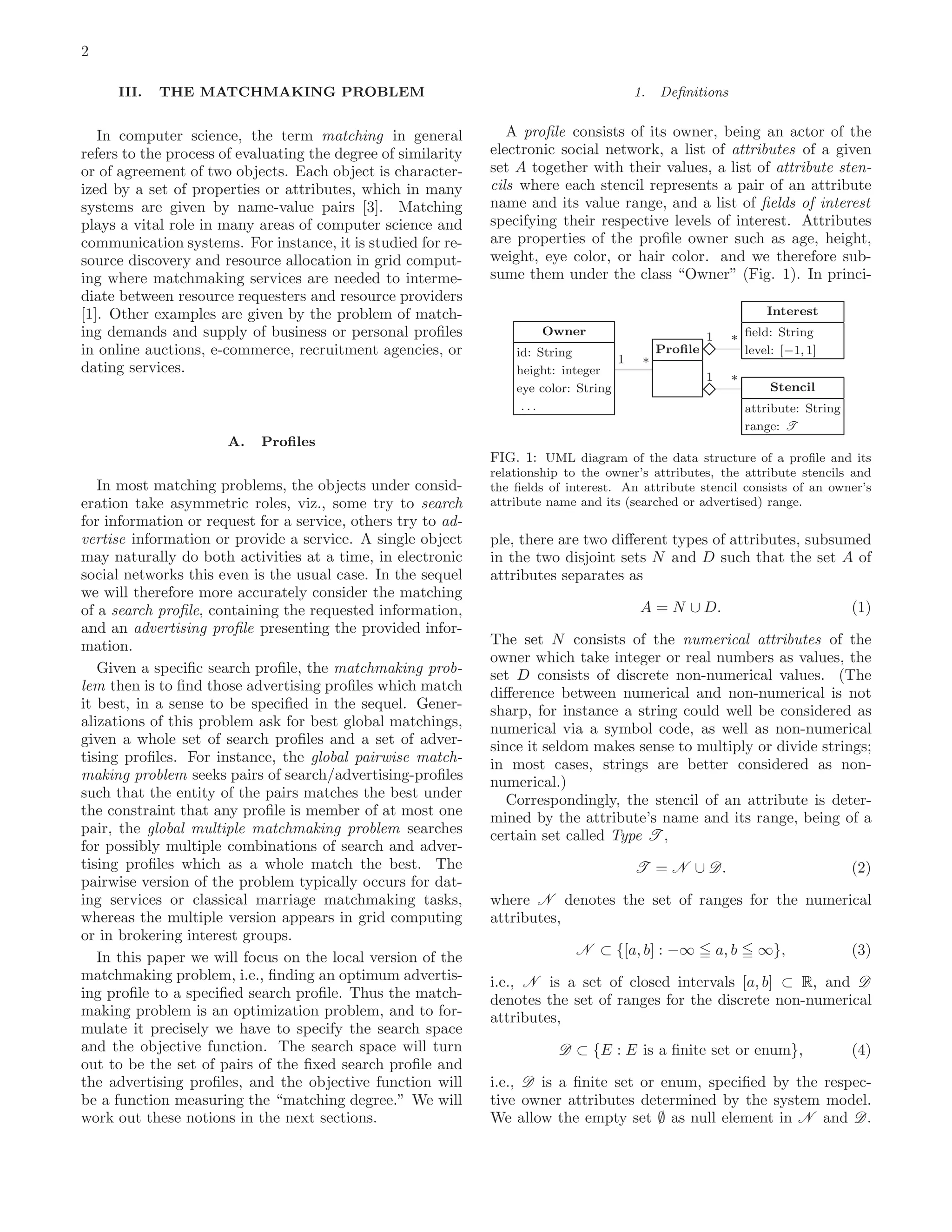
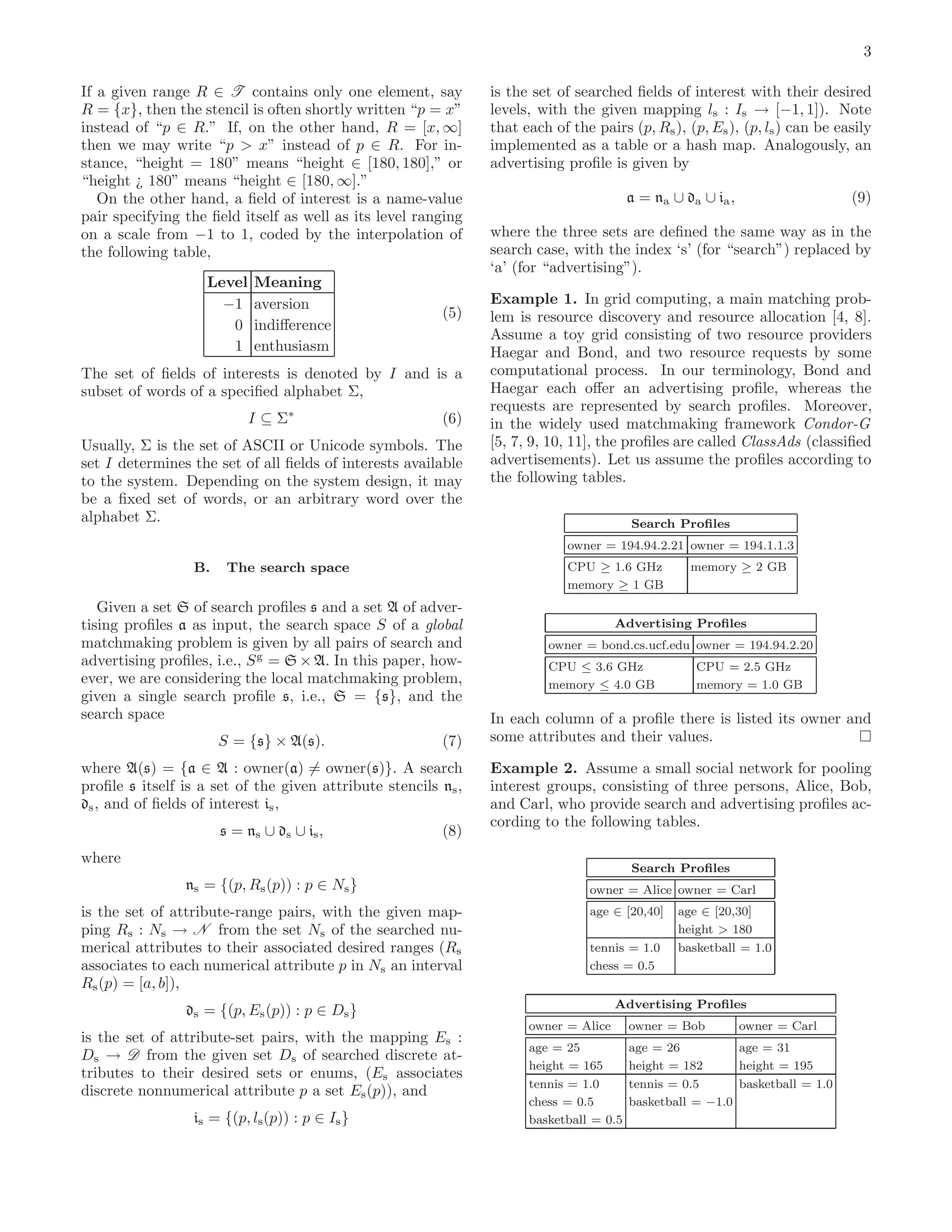
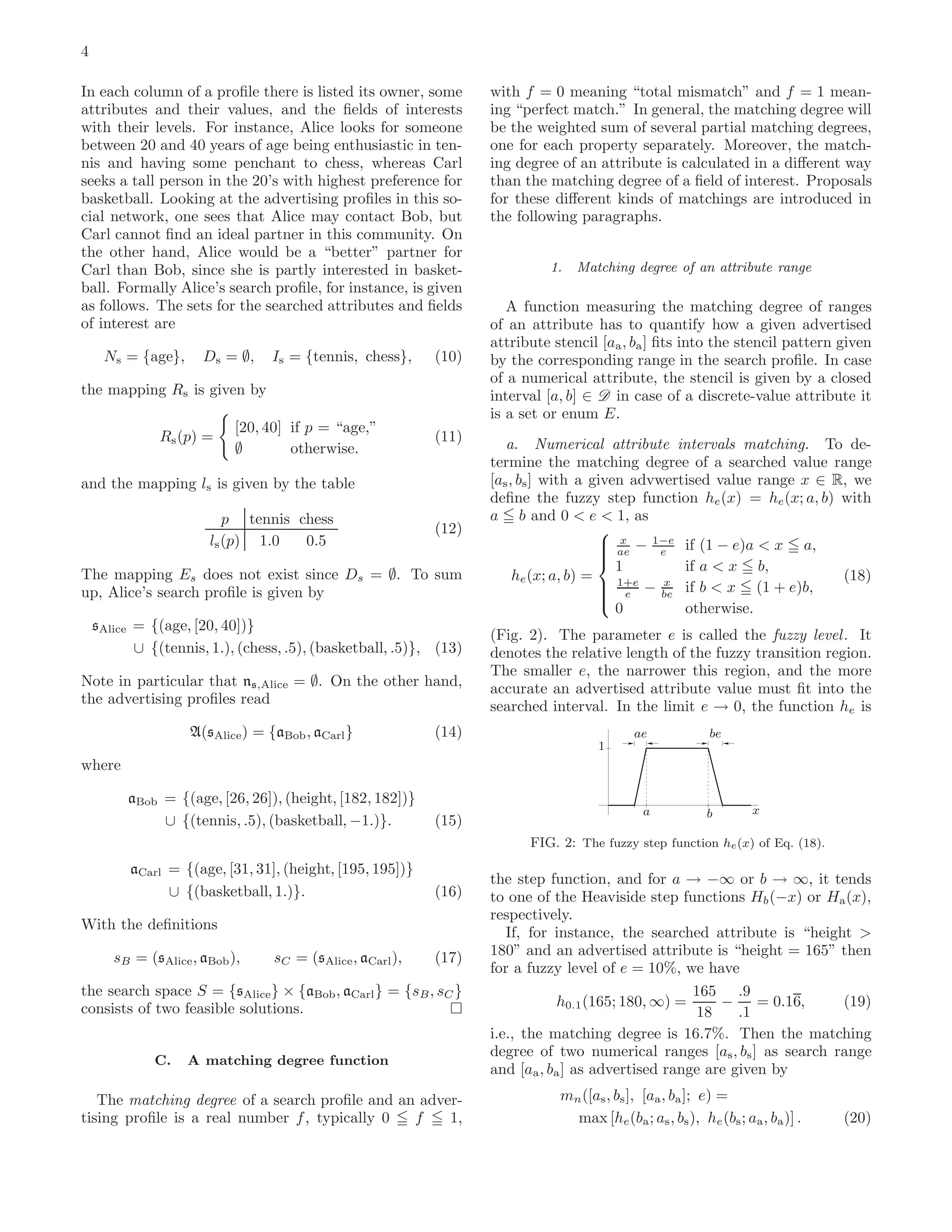
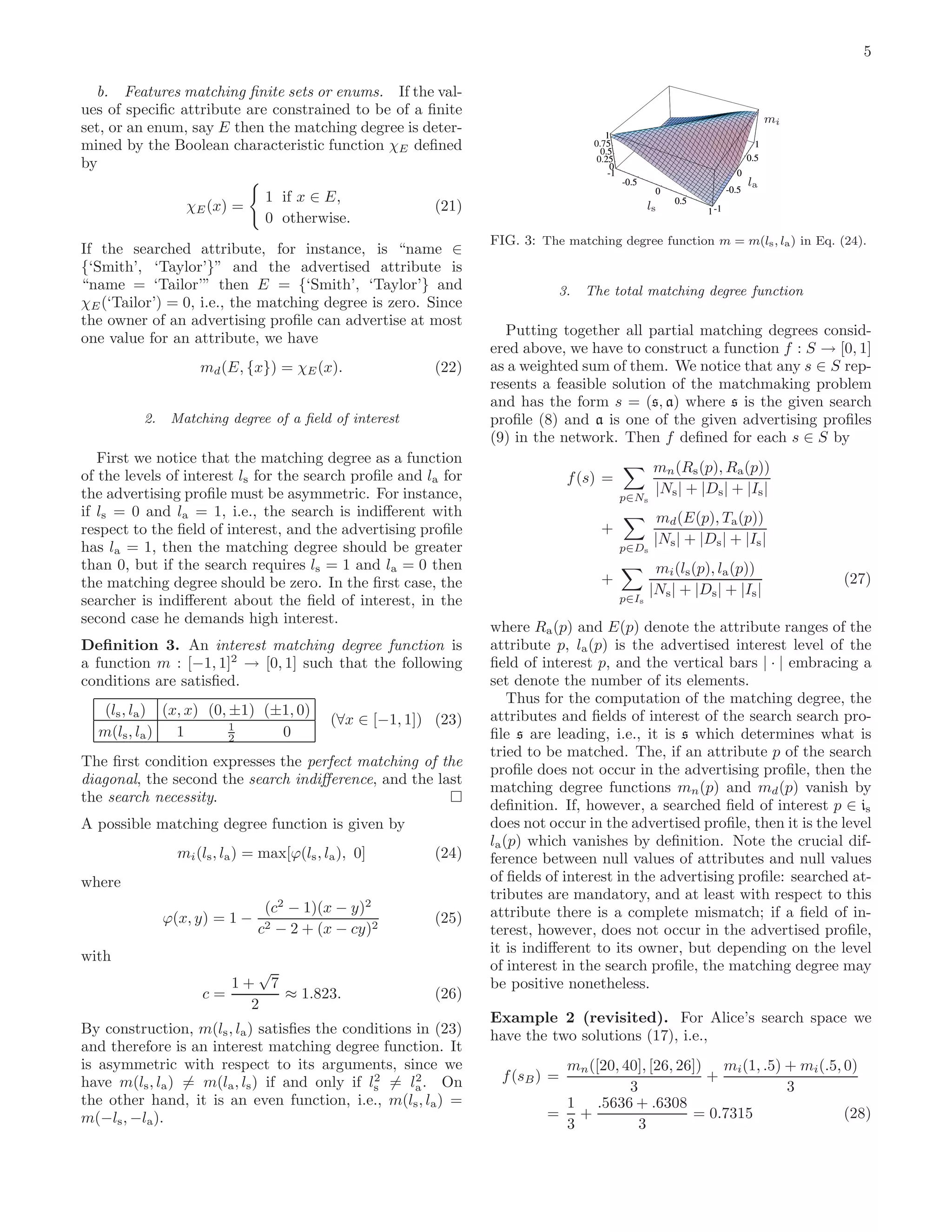
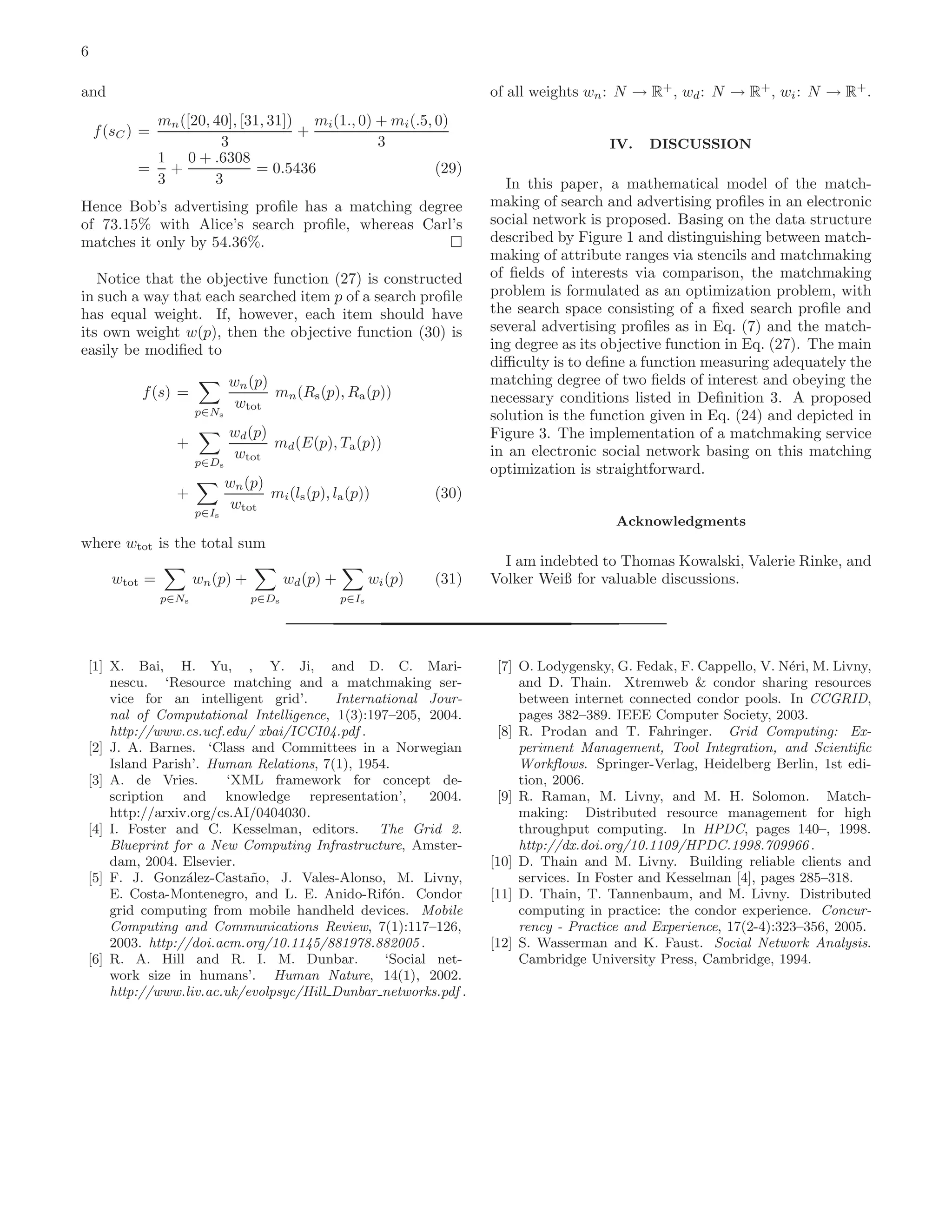
This document presents a mathematical model for the matchmaking problem in electronic social networks, formulating it as an optimization problem that measures the matching degree between search and advertising profiles. It discusses the structure of these profiles and defines the search space and objective functions used in the matchmaking process. The paper aims to provide a precise definition of the matching degree function and examples to illustrate its implementation.





